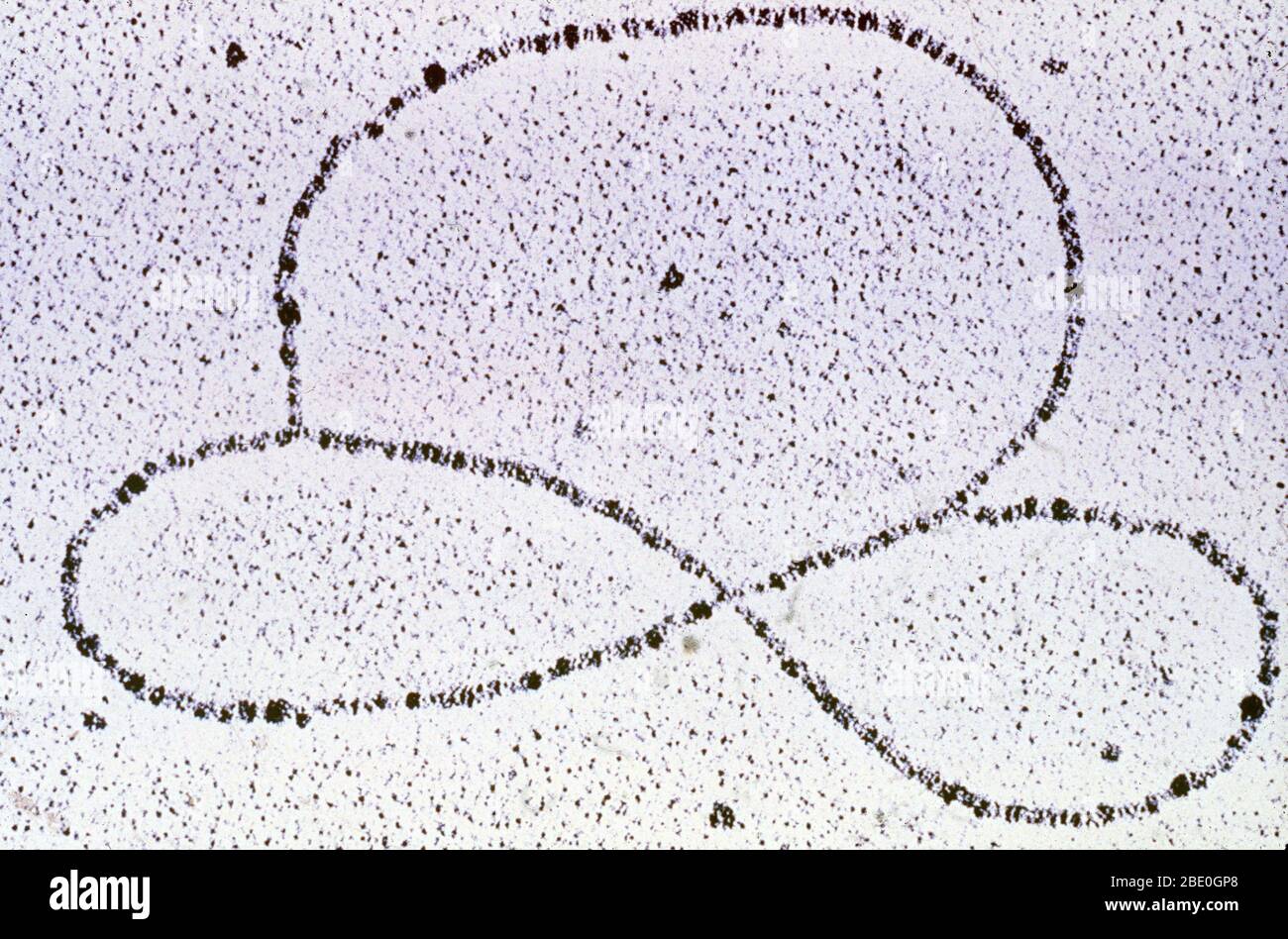Plasmids symbiotic pieces Stock Photos and Images
 Transmission electron micrograph (TEM) of plasmids. Plasmids are symbiotic pieces of DNA (deoxyribonucleic acid) that occur in bacteria and yeast. They are separate from the main chromosome, replicate independently, and can be transferred from one cell to another carrying genes with them. This property of plasmids is exploited in genetic engineering, and is one of the ways in which resistance to antibiotics spreads among bacteria. Magnification unknown. Stock Photohttps://www.alamy.com/image-license-details/?v=1https://www.alamy.com/transmission-electron-micrograph-tem-of-plasmids-plasmids-are-symbiotic-pieces-of-dna-deoxyribonucleic-acid-that-occur-in-bacteria-and-yeast-they-are-separate-from-the-main-chromosome-replicate-independently-and-can-be-transferred-from-one-cell-to-another-carrying-genes-with-them-this-property-of-plasmids-is-exploited-in-genetic-engineering-and-is-one-of-the-ways-in-which-resistance-to-antibiotics-spreads-among-bacteria-magnification-unknown-image352825712.html
Transmission electron micrograph (TEM) of plasmids. Plasmids are symbiotic pieces of DNA (deoxyribonucleic acid) that occur in bacteria and yeast. They are separate from the main chromosome, replicate independently, and can be transferred from one cell to another carrying genes with them. This property of plasmids is exploited in genetic engineering, and is one of the ways in which resistance to antibiotics spreads among bacteria. Magnification unknown. Stock Photohttps://www.alamy.com/image-license-details/?v=1https://www.alamy.com/transmission-electron-micrograph-tem-of-plasmids-plasmids-are-symbiotic-pieces-of-dna-deoxyribonucleic-acid-that-occur-in-bacteria-and-yeast-they-are-separate-from-the-main-chromosome-replicate-independently-and-can-be-transferred-from-one-cell-to-another-carrying-genes-with-them-this-property-of-plasmids-is-exploited-in-genetic-engineering-and-is-one-of-the-ways-in-which-resistance-to-antibiotics-spreads-among-bacteria-magnification-unknown-image352825712.htmlRM2BE0GP8–Transmission electron micrograph (TEM) of plasmids. Plasmids are symbiotic pieces of DNA (deoxyribonucleic acid) that occur in bacteria and yeast. They are separate from the main chromosome, replicate independently, and can be transferred from one cell to another carrying genes with them. This property of plasmids is exploited in genetic engineering, and is one of the ways in which resistance to antibiotics spreads among bacteria. Magnification unknown.